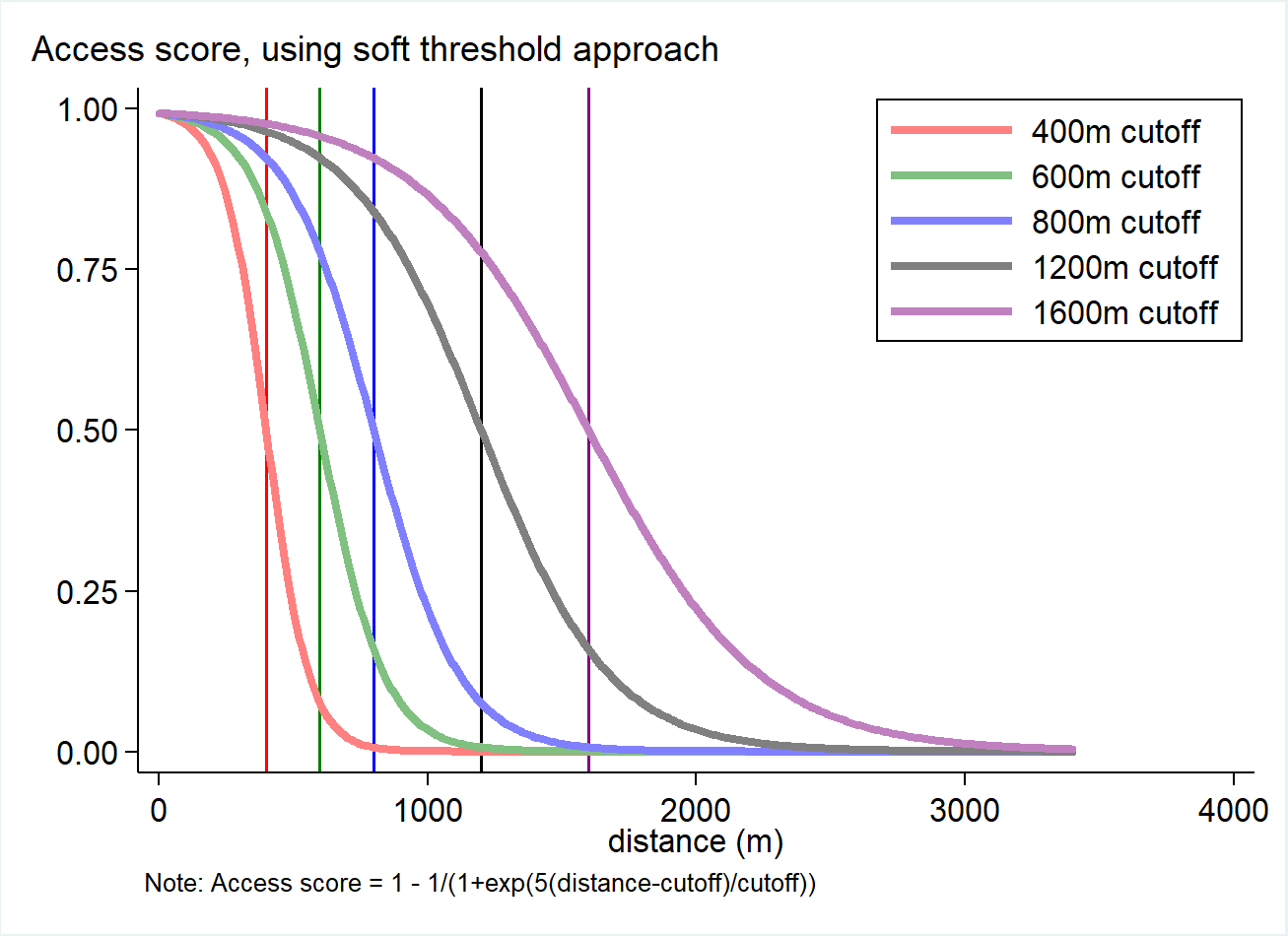Destination access
×Binary indicators of destination access were based on current urban policies or the literature if urban planning policies did not exist. While binary indicators are a natural way to express whether a policy has been achieved (or not), it is not intuitive that, for example, living within 390m from a bus stop gives a person full benefit of this proximity while living at 410m the resident receives zero benefit. This binary threshold can be referred to as a 'hard threshold', in contrast to 'soft threshold' indicators calculated using a logistic decay function yielding for each destination type a continuous access score ranging from 0 to 1. 

